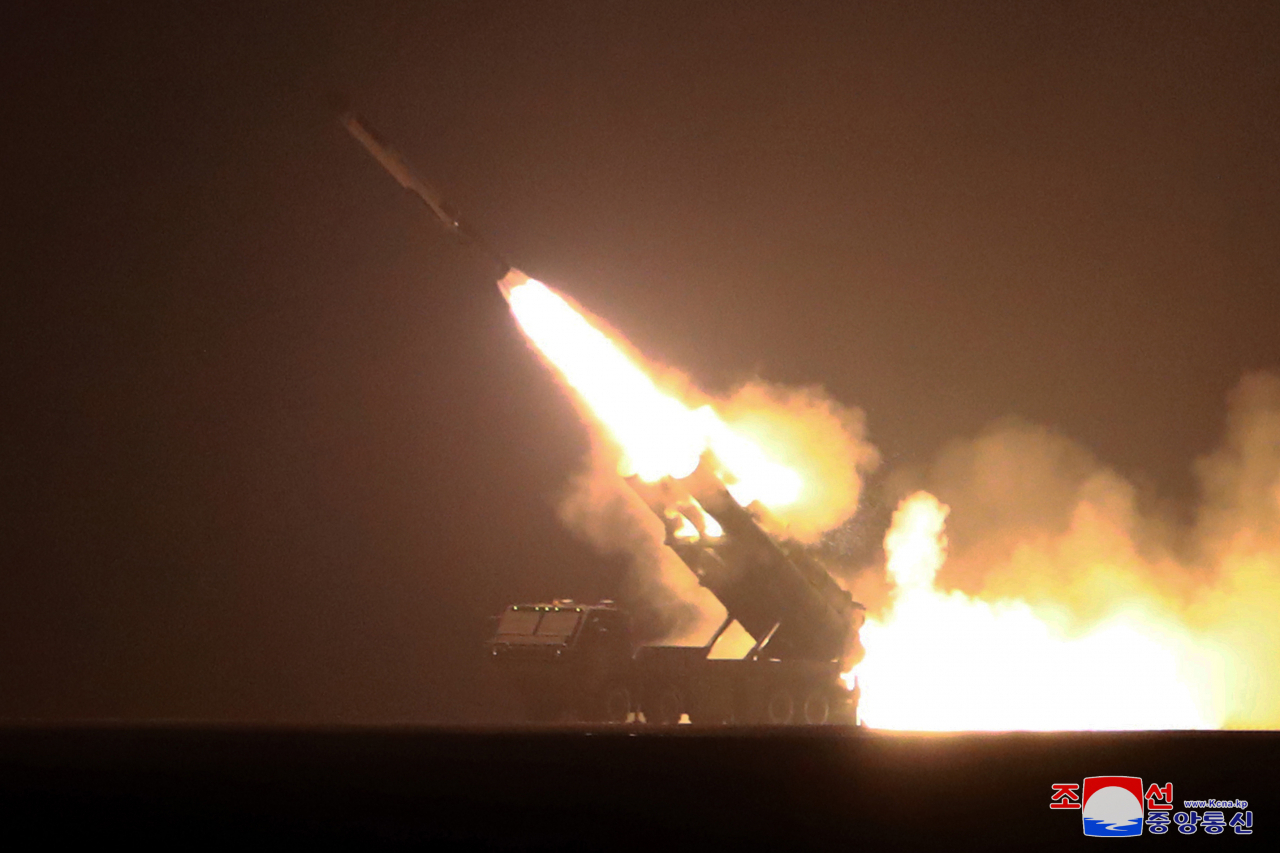 |
North Korea fires off a cruise missile into the East Sea on Thursday in this photo released by the Korean Central News Agency on Friday. (KCNA-Yonhap) |
North Korea launched cruise missiles it said clearly demonstrated the country’s readiness for nuclear conflict, a day after South Korea and the US held their nuclear drills and three-way maritime exercises with Japan in response to the North’s separate ballistic missile test this week.
According to the North Korean state-run Korean Central News Agency on Friday, the North fired off Thursday four Hwasal-2 strategic cruise missiles from North Hamgyong Province, Pyongyang’s northeastern region, to the East Sea. Such missiles are not covered by United Nations Security Council resolutions that ban North Korea’s ballistic missile launches. Cruise missiles are also harder to track than ballistic ones for South Korean and US intelligence authorities.
The latest firing highlights growing volatility in the region, as North Korea refuses to return to dialogue despite outreach from South Korea and the US. The allies have repeatedly said they are ready to discuss denuclearization. Pyongyang has said sanctions relief should come first and that Washington should drop its “hostile policy.”
“If the US continues to defy our repeated protests and warnings with its hostile and provocative practices, we could consider them as a declaration of war,” the North’s Foreign Ministry said in a statement released by the KCNA.
Wednesday’s nuclear drills jointly held by Seoul and Washington at the Pentagon are what Pyongyang calls “hostile and provocative practices,” along with their joint field exercises to take place in mid-March. Following the Pentagon meeting, Seoul’s defense officials toured US nuclear submarines. On the same day, South Korea, the US and Japan also held maritime drills simulating North Korean attacks.
Analysts said Pyongyang is stepping up military activity to pressure Washington to reverse its policy. North Korea is using military drills and UN checks aimed at its nuclear weapon and missile programs as excuses to stay aggressive, according to Park Won-gon, a professor of North Korean Studies at Ewha Womans University.
“The line of provocations we have to expect for 2023 is quite different from 2022 in that from now on, South Korea and the US will be the subjects of North Korea’s hostility. Kim Yo-jong just showed the two allies would be the ones facing threats if they don’t behave,” Park said, referring to the powerful sister of leader Kim Jong-un.
Kim Yo-jong has said the Pacific could turn into a “firing range” if the allies carry on with military activity. Another North Korean nuclear test is still a possibility, Park added, referring to the last time that happened in 2017.
International endeavors to rein in North Korea’s aggression have seen little, if any, headway with Russia and China consistently blocking US-led attempts to rally the 15-member UN Security Council against the North. Moscow and Beijing, Pyongyang’s biggest supporters, say that the US is not entirely free from blame.






![[Today’s K-pop] Blackpink’s Jennie, Lisa invited to Coachella as solo acts](http://res.heraldm.com/phpwas/restmb_idxmake.php?idx=644&simg=/content/image/2024/11/21/20241121050099_0.jpg)
